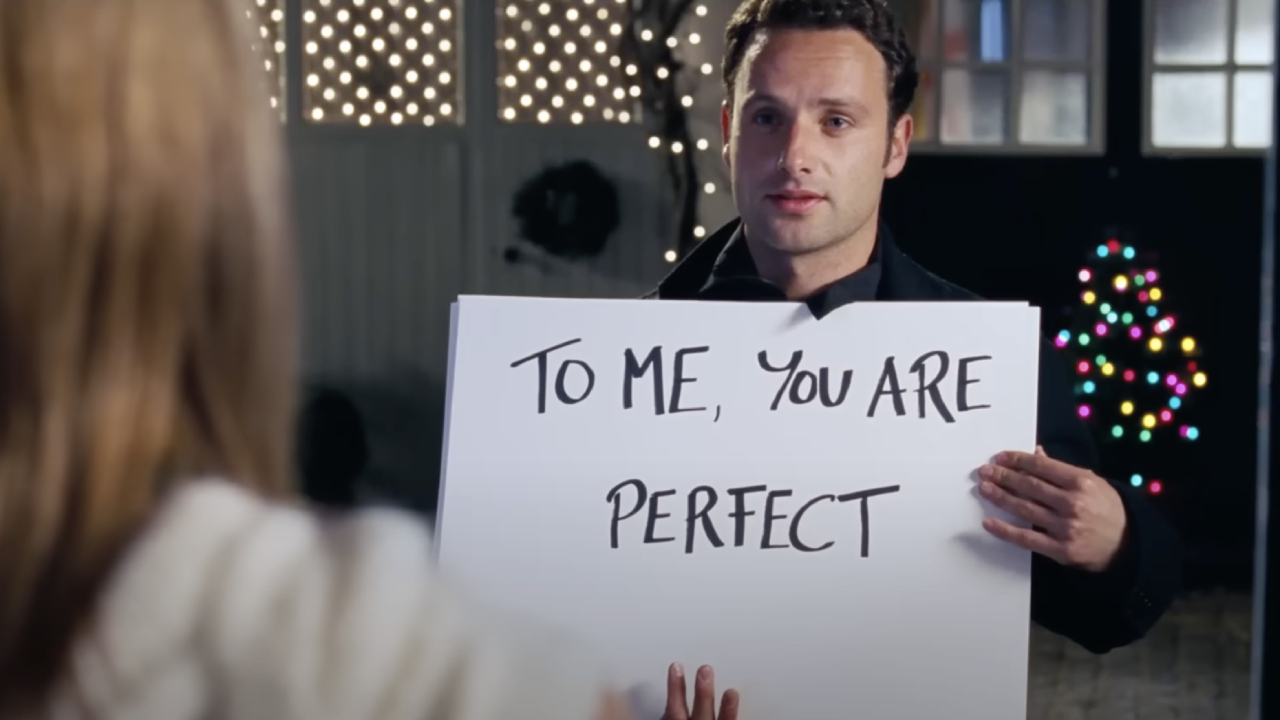Love Actually really is one of the best Christmas movies of all time, giving audiences 10 different love stories and a special twist to how they’re all connected. It’s an inventive, genuine feel-good movie that reminds people how love makes its way into the holiday season. However, director Richard Curtis looks back on what a “catastrophe” making the rom-com was and about learning what “a stalker” Andrew Lincoln’s character has been perceived to be only a few years ago.
The first time you saw Love Actually, the Mark/Juliet storyline made the movie about unrequited love. Mark was the best man at Juliet’s wedding and we find out his cold behavior towards her was “self-preservation” to deny his true feelings for her. He goes to her house with cute cards that scream romance, and she gives him a sweet kiss that allows him to move on. However, audiences construe that memorable scene now as Andrew Lincoln’s character being a bit of a stalker. The Christmas film’s director Richard Curtis told Indiewire he certainly didn’t interpret this shocking trait about Mark until a few years later:
I think it’s a bit weird. I mean, I remember being taken by surprise about seven years ago, I was going to be interviewed by somebody and they said, ‘Of course, we’re mainly interested in the stalker scene,’ and I said, ‘What scene is that?’ And then I was, like, educated in it. All I can say is that a lot of intelligent people were involved in the film at the time, and we didn’t think it was a stalker scene. But if it’s interesting or funny for different reasons [now] then, you know, God bless our progressive world.
There were plenty of romantic movies in the 2000s/2010s that made stalking less creepy, like the Twilight or Fifty Shades of Grey movies. So back in 2003 when Love Actually was made, it was possible that the intentions of those making the rom-com ensemble felt we should have sympathy for Mark that the woman he loves married his friend and his bravery in still telling her how he felt. Plus, we can’t deny that the use of cue cards expressing your love is incredibly cute. It sure inspired Tom Holland to go all Love Actually spreading awareness about the Far From Home premiere contest.
Now that we’re in the 2020s, it’s easy to interpret Andrew Lincoln’s character’s actions as stalker behavior in professing your love to a taken woman. The cast sure felt that way, like the British actor himself saying the sign scene had him portraying a “weird stalker guy.” Keira Knightley, who played Juliet, certainly felt the after-effects of that memorable scene saying that people recreated card gestures for her that she found “creepy and sweet” like she found in the film. But like Richard Curtis previously said about the “top-notch stalking” scene, times have changed, and certain scenes that were viewed as romantic back then are now traits we hope no one follows to woo someone.
One of the greatest things about Love Actually was its best use of an ensemble cast in giving us a variety of love stories that send out heartwarming vibes. However, filming a movie with multiple storylines was no picnic for Richard Curtis:
The strange thing about ‘Love Actually’ is, when we finished the movie, it was a catastrophe. It took six months to re-edit it and learn all these lessons about how to do a multi-thread story. When I wrote ‘Love Actually,’ and we had the read-through, and it sounded great, I thought you would probably do A, B, C, D, E, F, G. But actually when you’re doing multi-story, the danger is you don’t commit to any of the stories and the audience never feels engaged, so you kind of end up doing A, B, C, C, A, so you get into the story and then you introduce a surprise and then you end one story earlier than the others.
It’s understandable how confusing it must have been to edit all of those different romantic storylines together – especially since Love Actually isn’t like an anthology movie where it’s a series of short films all rolled up in one. All of the sequences are told in non-linear order so that when they all come together at the end, it makes sense why we’re getting to know this unique cast of characters. But as Richard Curtis said, putting the stories in non-chronological order helps audiences engage with the characters compared to the whole storyline told in one swoop. Putting other stories in between generates suspense. But, I can imagine how mind-rattling that must be to put them together in the editing room and make sure they all flow by the end credits.
Despite Love Actually’s memorable cue card scene thought of by modern audiences as “stalking” and what a pain editing the ensemble Christmas film was, it’s still considered one of the best holiday flicks and movies of the 2000s people still watch. The film’s longstanding popularity still holds true as a sequel came to NBC in 2017 for the fundraising event “Red Nose Day” and still has a cult following. You can add the Golden Globe-nominated movie to your Christmas watchlist available now on your Amazon Prime subscription.

